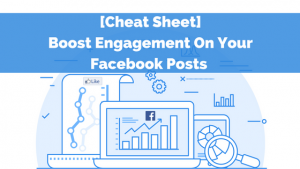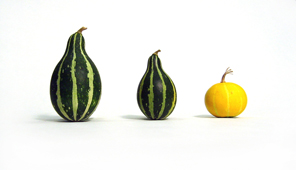If you’re familiar with online marketing, you know the importance of securing a high conversion rate. Getting as much traffic as possible can help you find success—but if all those inbound visitors have no way to spend money with you, or earn you money, your efforts will never be profitable.
Still, there’s no “magic formula” for conversion optimization. There are many best practices that can point you in the right direction, but you still need to dig in and experiment for yourself to find the right approach for your brand and your audience.
This is where AB testing comes into play—but if you’re not familiar with it, or aren’t sure how to execute it, it can seem intimidating. Hopefully, this guide will help you see the value of AB testing, and give you everything you need to get started in your own conversion optimization campaign.
Why AB Testing?
So what is AB testing, and why is it so valuable? This is the basic premise: you’ll establish two versions of your conversion opportunity (an “A” version and a “B” version), and test them under highly similar (if not identical) conditions. From there, you should be able to see which version gives you the most conversions, so you can adjust your strategy and keep moving.
There are a few advantages to this approach:
- Apples to apples comparisons. Rather than trying to compare two unlike concepts, AB testing forces you to create two highly similar variations to compare. This makes it easier for you to figure out which one is objectively “better” and helps you isolate variables.
- A drive to experiment. AB testing also forces you to experiment, giving you an excuse to creatively brainstorm about ways to improve your conversion rate—and a platform to run those experiments in a live environment.
- A consistent formula. If you want to measure your return on investment (ROI) effectively, and keep it increasing, you need a consistent, repeatable process to follow. AB testing provides that simple formula, giving you a clear cycle to follow to see better results.
The Ideas
So what variables can you use to experiment with in your AB testing setting? These are just a handful of ideas:
- Fonts and colors. There’s no single color that converts better than the others, but color is still important for your conversion rate. Why? Because different colors can strike different emotions, and work differently for different brands. The same is true of fonts and other subtle design choices. AB testing can help you pinpoint the perfect visual nuances for your brand.
- CTA locations. The location of your call-to-action (CTA) can mean the difference between getting a click and never getting seen. Try many different locations and sizes to ensure you’ve optimized its placement.
- Every conversion has an offer behind it, whether it’s a product you’re selling for a fixed amount of money, or a free offer you’re giving to people in exchange for offering you their email.
- If you have copy on your landing page (and you should), you’ll also want to experiment with your phrasing. Since it only takes a few words to make or break someone’s impression of your brand, even a small change could be critical here.
- Images and videos. Be sure to swap out different images and videos too—the right visual cue could instantly pump up your conversion numbers.
- You should also think about the length and nature of your forms—if they’re too long or annoying to fill out, it could bring your conversion rate down significantly.
- Presence of chatbots. Yes, including a chatbot (or even live chat option) on your landing page can help improve conversions. It’s worth testing!
The Testing Grounds
Let’s say you have an idea on what to AB test, so what happens next?
- Landing pages. Landing pages are still one of the best ways to drive conversions, and since they’re easy to create, they make for the perfect opportunity to experiment with small, variable conditions. Though there’s more than one way to AB test, one of the most popular is to create two similar, yet distinct landing pages, and test them against each other.
- Traffic divergence. You’ll also need some way to diverge your traffic, which can be tricky to do; if you draw from two different traffic sources, you might introduce a second variable that interferes with the reliability of your results. Try to segment traffic with custom URLs or randomized assignment.
- Finally, and in a step that should be obvious, you have to have the tools in place to measure how your visitors are interacting with each variable. You should be able to measure variables like time spent on page, number of conversions, and even heat mapping of how a visitors interacts with your site. The more data you have to work with, the better.
Following Up
The final step of the AB testing process is the most important. Once you’ve collected information on all your different variables, you should be able to tell which method achieved the greatest results (and if the results are ambiguous, you might consider testing again).
Keep the variation that earned you the better results, and ditch the one that didn’t. Then, rinse and repeat—keep trying out new variations and little tweaks to inch your conversion rate even higher. It’s unlikely you’ll see dramatic results from anyone change, but as long as you keep steady pressure and steady progress, eventually, you’ll see increased conversion rates.
Digital & Social Articles on Business 2 Community(78)






